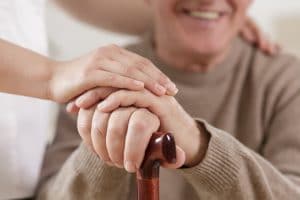Learn the signs and symptoms of elder abuse so that you can be prepared to act if your loved one is being abused, neglected or exploited.
There can be no doubt: our population is rapidly aging. By 2050, estimates are that 20% of the American population will be over age 65, with 19 million adults over age 85 . As people live longer, more Americans are turning to caregivers to tend to their parents or grandparents, such in-home staff or long-term care facilities. These arrangements can be incredibly beneficial for both the elderly person and their families. But they also may open the door to abuse and neglect of our vulnerable loved ones.
Elder abuse is a serious issue in this country, affecting between 1.6 and 2 million seniors each year. Elder abuse can take many forms, from physical abuse (which may include sexual abuse), to psychological or emotional abuse, financial abuse or neglect. Many victims of elder abuse are dependent on their abuser for their basic needs.
Signs and Symptoms of Elder Abuse
It may be difficult to spot elder abuse, because many of the signs can also be symptoms of mental deterioration that is common with older Americans. Nevertheless, being aware of and alert to these warning signals is critical to recognizing elder abuse.
Initially, be alert to any changes in personality or behavior, or arguments between the older person and his or her caregiver. These can be an indication of elder abuse.
Signs of Emotional Abuse
Many times, emotional abuse can be seen if a caregiver uses threatening, demeaning or controlling language in front of you. Otherwise, look for behaviors that may mimic dementia, such as rocking back and forth, mumbling to themselves or sucking on fingers or clothing.
Signs of Financial Exploitation
If a caregiver has access to your loved one’s possessions or accounts, watch carefully for large withdrawals, or missing items. Be wary of sudden changes in a will, power of attorney, insurance policies or titles, or any addition of names to credit or debit cards. Unpaid bills may also be a sign of financial abuse, particularly if you know that the senior should have the ability to pay these bills.
Signs of Physical Abuse
If a loved one has unexplained injuries, such as bruises, cuts, broken bones, dislocations or scars, this may be an indication that they are being physically abused. This could include bruises on both upper arms, for example, which may be a result of being grabbed. Similarly, marks on the wrists or ankles may be seen if an elderly person has been restrained. While some injuries may have innocent explanations, watch carefully if you see these sorts of injuries — particularly if the caregiver refuses to allow you to see your loved one alone.
Signs of Sexual Abuse
Symptoms of elder sexual abuse can include bruises or bleeding around breasts or genitals, and torn or stained undergarments. If your loved one has an unexplained sexually transmitted infection, this may also be a sign that they are being abused.
Signs of Neglect
Neglect can often be seen in a person’s physical condition. It may include unusual weight loss, matted hair and dirty or unsuitable clothes. You may also notice that the elderly person’s living conditions are unsanitary or unsafe. Each of these are potential signs of neglect.
If you suspect that your loved one is suffering from elder abuse, the first step is to ensure their safety by reporting the abuse and removing them from the situation. Next, make sure that they are compensated for the harm that they have suffered by contacting a seasoned elder abuse attorney. At PLBH, we understand the serious nature of elder abuse, and we are committed to providing no-risk representation to our clients. Contact us today at (800) 435-7542 or info@plblaw.com to schedule a free initial consultation.

